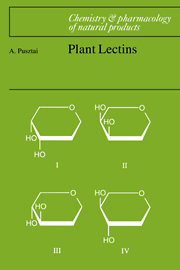3 results in Chemistry and Pharmacology of Natural Products

Plant Lectins
-
- Published online:
- 05 February 2012
- Print publication:
- 06 February 1992

Lignans
- Chemical, Biological and Clinical Properties
-
- Published online:
- 05 February 2012
- Print publication:
- 30 November 1990

Saponins
-
- Published online:
- 19 October 2009
- Print publication:
- 11 May 1995

